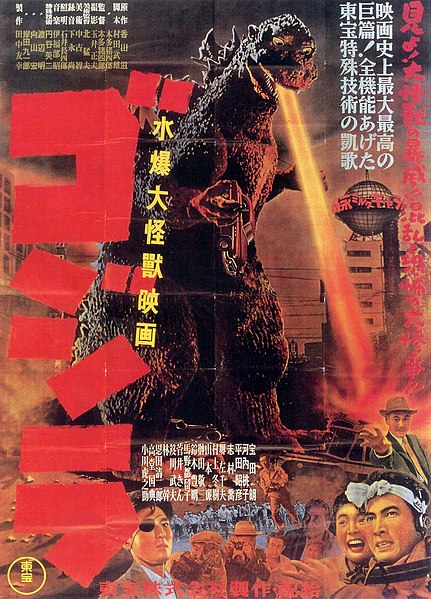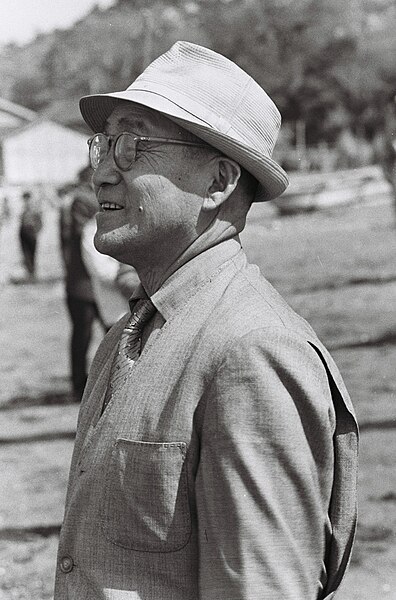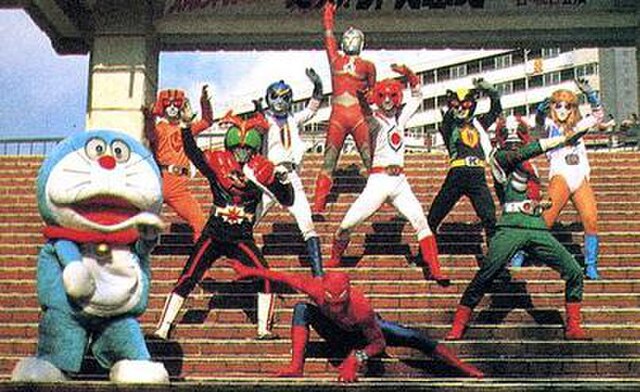Shotaro Ishinomori was a Japanese manga artist who became an influential figure in manga, anime, and tokusatsu, creating several immensely popular long-running series such as Cyborg 009, the Super Sentai series, and the Kamen Rider series. He was twice awarded by the Shogakukan Manga Awards, in 1968 for Sabu to Ichi Torimono Hikae and in 1988 for Hotel and Manga Nihon Keizai Nyumon. He was born as Shotaro Onodera in Tome, Miyagi, and was also known as Shotaro Ishimori prior to 1986, when he changed his family name to Ishinomori by adding the no (ノ) character in katakana.
Shotaro Ishinomori
One of the Mangattan Liners on the Senseki Line decorated with images of the eponymous character of Ganbare!! Robocon
Tokusatsu is a Japanese term for live-action films or television programs that make heavy use of practical special effects. Credited to special effects director Eiji Tsuburaya, tokusatsu mainly refers to science fiction, war, fantasy, or horror media featuring such technology but is also occasionally dubbed a genre itself. Its contemporary use originated in the Japanese mass media around 1958 to explain special effects in an easy-to-understand manner and was popularized during the "first monster boom" (1966-1968). Prior to the monster boom, it was known in Japan as Tokushu gijutsu or shortened Tokugi .
Poster for Godzilla (1954). The techniques developed by Eiji Tsuburaya for Toho continue to be used in the tokusatsu film and television industry.
Eiji Tsuburaya is credited as the creator of Tokusatsu. Photographed by Yoshikatsu Kanno on the Miura Peninsula, Kanagawa Prefecture in March 1960.
Protagonists of the popular tokusatsu franchises mostly of the late 1970s (from back to front, left to right): Ultraman Joneus (Ultra Series), Battle Fever J (Super Sentai), Kamen Rider Stronger and Kamen Rider V3 (Kamen Rider Series), and Spider-Man. The photo also features manga character Doraemon on the far left.





